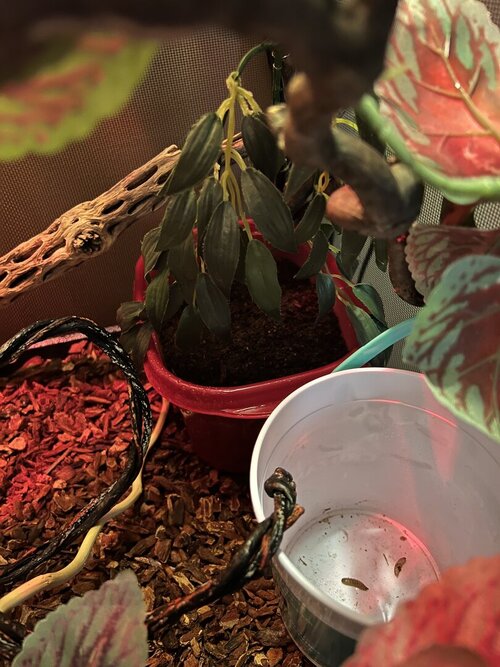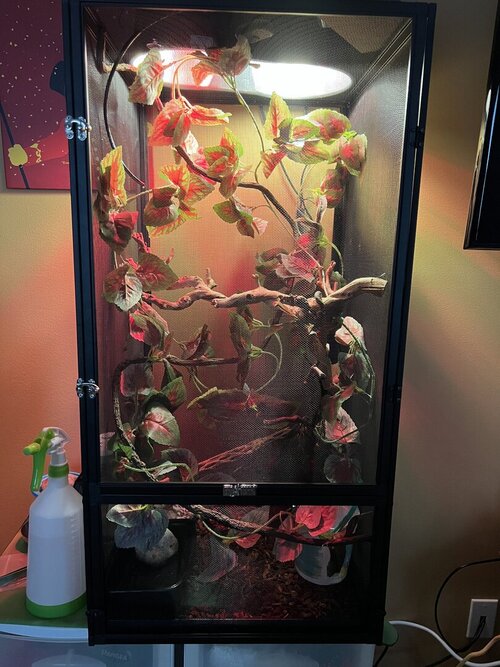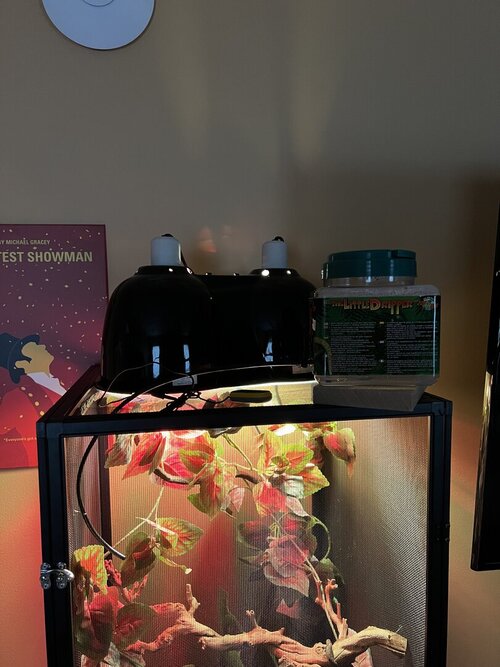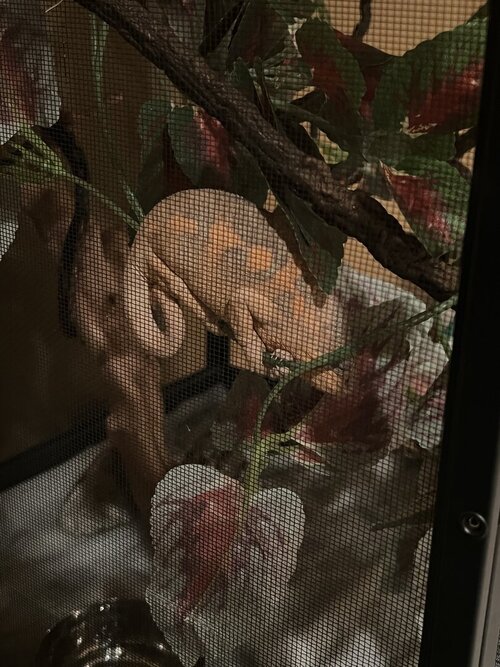Correlophus
New Member
Hello, I am new to chameleon ownership and have recently been given a female panther chameleon. She is about 1 year old. Her name is Perse! Long story short she was given to me by a friend who is caring for her brothers and sisters that all have health issues. Perse is healthy other than the fact she’s missing the last couple inches of her tail. So she’s a little nubby and clumsy. Not any less beautiful though!
I got her about 5 days ago and have been slowly setting up her enclosure as I was not entirely prepared to take her home. I have been doing research daily on panthers to make sure I know my stuff. Prior to owning her I had done research on panthers and Jackson’s as I was interested in eventually having one. So I was not completely blind sided.
She’s got lots of leaves and vines to climb, a lay box just in case she needs it, and a dish for her wormies and such.
Her previous caregiver was feeding her black rock fly larvae, mealworms, waxworms, crickets, and on occasion Dubia roaches and horn worms. While under the previous person care she was eating and drinking regularly, basking, and exploring her enclosure. I was told she loved the fly larvae and would eat twice a day.
Since she has been with me, I haven’t seen her eat but I have seen her drink a few times. I keep bugs in her enclosure all day just in case she decides to eat. She mostly just hangs out in one spot. However, it’s a different spot each day. She has a little dripper that goes constantly and I spray her enclosure multiple times a day. I also haven’t seen her poop just yet either.
I’ve read several different places that it takes a while for them to get comfortable in a new environment. So I’m hoping that’s the case. I have appropriate bulbs for uvb and basking as told. Lights are on for 12 hours a day and she is plenty warm. My room stays about 70 at baseline. I try not to handle her much as well.
Any help or advice would be amazing!!
I got her about 5 days ago and have been slowly setting up her enclosure as I was not entirely prepared to take her home. I have been doing research daily on panthers to make sure I know my stuff. Prior to owning her I had done research on panthers and Jackson’s as I was interested in eventually having one. So I was not completely blind sided.
She’s got lots of leaves and vines to climb, a lay box just in case she needs it, and a dish for her wormies and such.
Her previous caregiver was feeding her black rock fly larvae, mealworms, waxworms, crickets, and on occasion Dubia roaches and horn worms. While under the previous person care she was eating and drinking regularly, basking, and exploring her enclosure. I was told she loved the fly larvae and would eat twice a day.
Since she has been with me, I haven’t seen her eat but I have seen her drink a few times. I keep bugs in her enclosure all day just in case she decides to eat. She mostly just hangs out in one spot. However, it’s a different spot each day. She has a little dripper that goes constantly and I spray her enclosure multiple times a day. I also haven’t seen her poop just yet either.
I’ve read several different places that it takes a while for them to get comfortable in a new environment. So I’m hoping that’s the case. I have appropriate bulbs for uvb and basking as told. Lights are on for 12 hours a day and she is plenty warm. My room stays about 70 at baseline. I try not to handle her much as well.
Any help or advice would be amazing!!
Attachments
Last edited:








